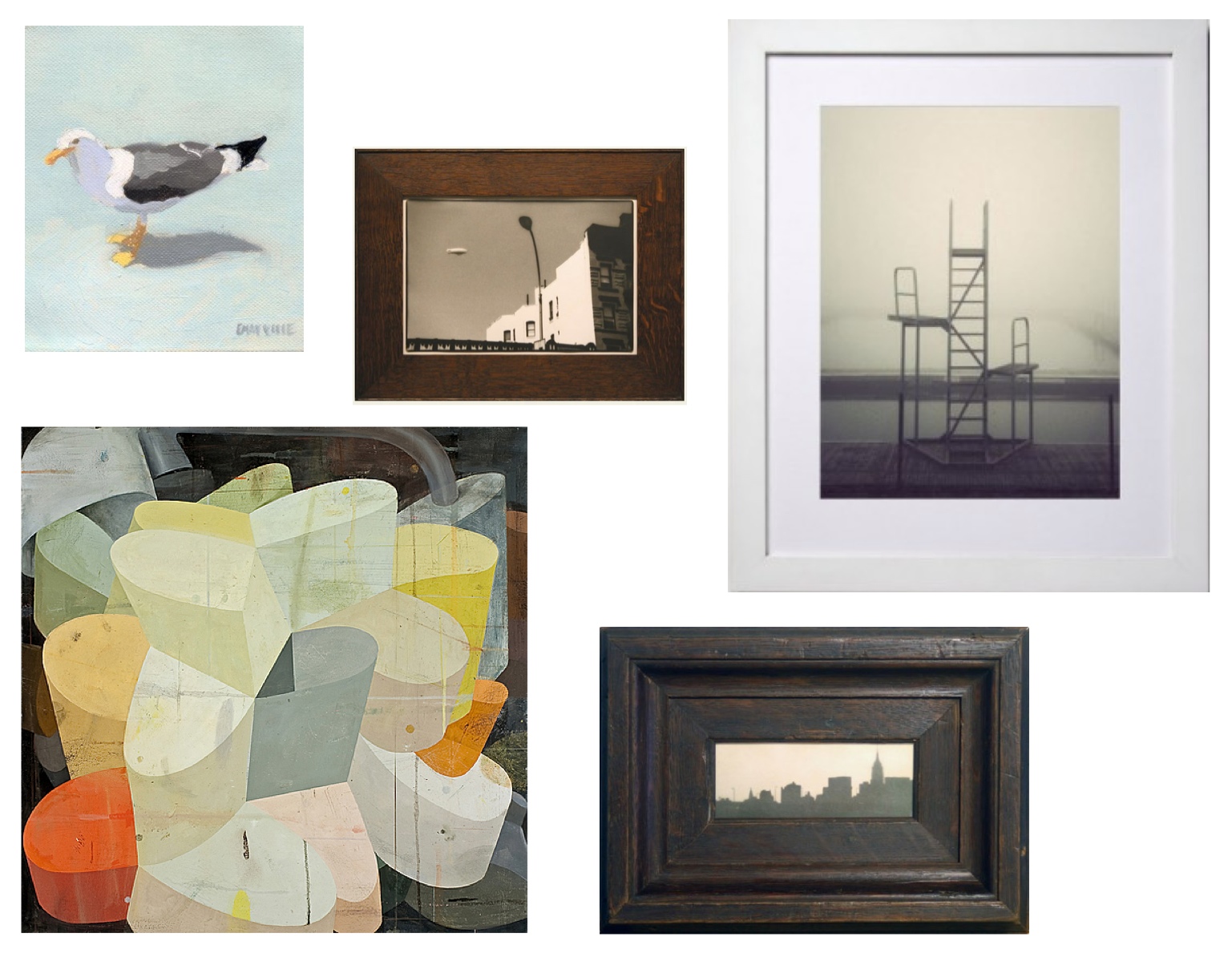 |
| From the High Line 2012 (24x24 oil and pencil on panel) by Lisa Breslow |
Where most shoppers have will power, I have a gaping hole. The second I see an object I covet, it creates a kind of potential energy (remember potential energy from high school physics?) That energy begs for release. I used to think the only release was to physically obtain it, but blogging has helped me learn to discharge the energy in another way-- by sharing it with all of you! Instead of connecting with an object and thinking "must buy" and I now think, "must blog." Blogging as therapy.
But despite my formidable progress, I have still have a fatal flaw-- great art. And art, dear readers, is a very expensive weakness to have. With clothing, I can sternly remind myself that it will likely languish in my closet. And that it depreciates the second money changes hands.
But not art! Art confers a lifetime of engagement, solace, contemplation, joy...You can pass it on to your children! And your children's children! Then there's that mischievousness voice in my head that whispers, "it's an investment."
The Architectural Digest Home Design Show is a surprisingly good place to discover high-quality affordable art. One artist mentioned that it's long been an "under-the-radar" art fair, where artists and galleries see value in the high traffic and relatively low cost of a booth.
A few of my discoveries include:
- Artist Cecile Brunswick, who paints the remains of tattered billboards spotted on her travels. I love the idea that a "lower" art form (an advertising or propoganda billboard) morphs into a higher art form (an oil on canvas) through the effects of time. Because Brunswick often catches only a quick glimpse of the billboard, her paintings are frequently from memory, adding another charming element of distortion that strikes a cord in each of us: the power of time and memory to change what we see.
- Danish photographer Kim Holtermand captures abandoned cities with a palpable sense of emptiness. "Pool Chairs," in particular, feels simultaneously like a landscape in which human presence has intruded, unwelcome, and a portrait of an inanimate object rendered lonely and obsolete by the absence of human presence. (I mean, sure, maybe it's crazy to say to say that pool chairs have emotions. But I dare you to look at that shot and tell me you don't want to pat those pool chairs on the back and say, "there, there. They'll be back-- summer's just around the corner.")
- Silver and platinum gelatin prints of architectural forms. Both Jefferson Hayman (represented by Schoolhouse Gallery) and Adrienne Moumin have chosen as their medium that most painstaking and retro of photographic techniques. It seems particularly well suited to cityscapes and architectural detail.
Check out these gems-- a few of my favorite pieces spotted at the show:
Sources (clockwise from top left)
- Seagull 13 (11x14 print, edition of 50) by Elizabeth Mayville, via Art Star - $50 ($125 framed)
- Airship West Village by Jefferson Hayman via Schoolhouse Gallery
- Deserted City: Pool Chairs (30x40 print, edition of 50) by Kim Holtermand, via Art Star - $450 ($750 framed)
- Untitled by Jefferson Hayman via Schoolhouse Gallery
- What you must do to get home safely (36x36 oil on canvas) by Deborah Zlotsky, via Kathryn Markel Fine Arts - $5,000
Sources (clockwise from top left)
- Crescent, (30x30 abstract oil painting from billboard remnants) by Cecile Brunswick - $4,800
- Observing Presence, Series #8 2010 (21x13 pieced vintage silk) by Debra Smith, via Kathryn Markel Fine Arts - $1,800
- From the High Line 2012 (24x24 oil and pencil on panel) by Lisa Breslow, via Kathryn Markel Fine Arts - $8,000
- Snowy Branches #156 (15x15 limited edition print) by Dagmara Weinberg
- Brooklyn Sometimes Reminds Me of Europe by Jefferson Hayman, via Schoolhouse Gallery
- Hirshhorn Courtyard (hand printed silver gelatin photograph) by Adrienne Moumin, via Picturexhibit












.jpg)




















.jpg)

















